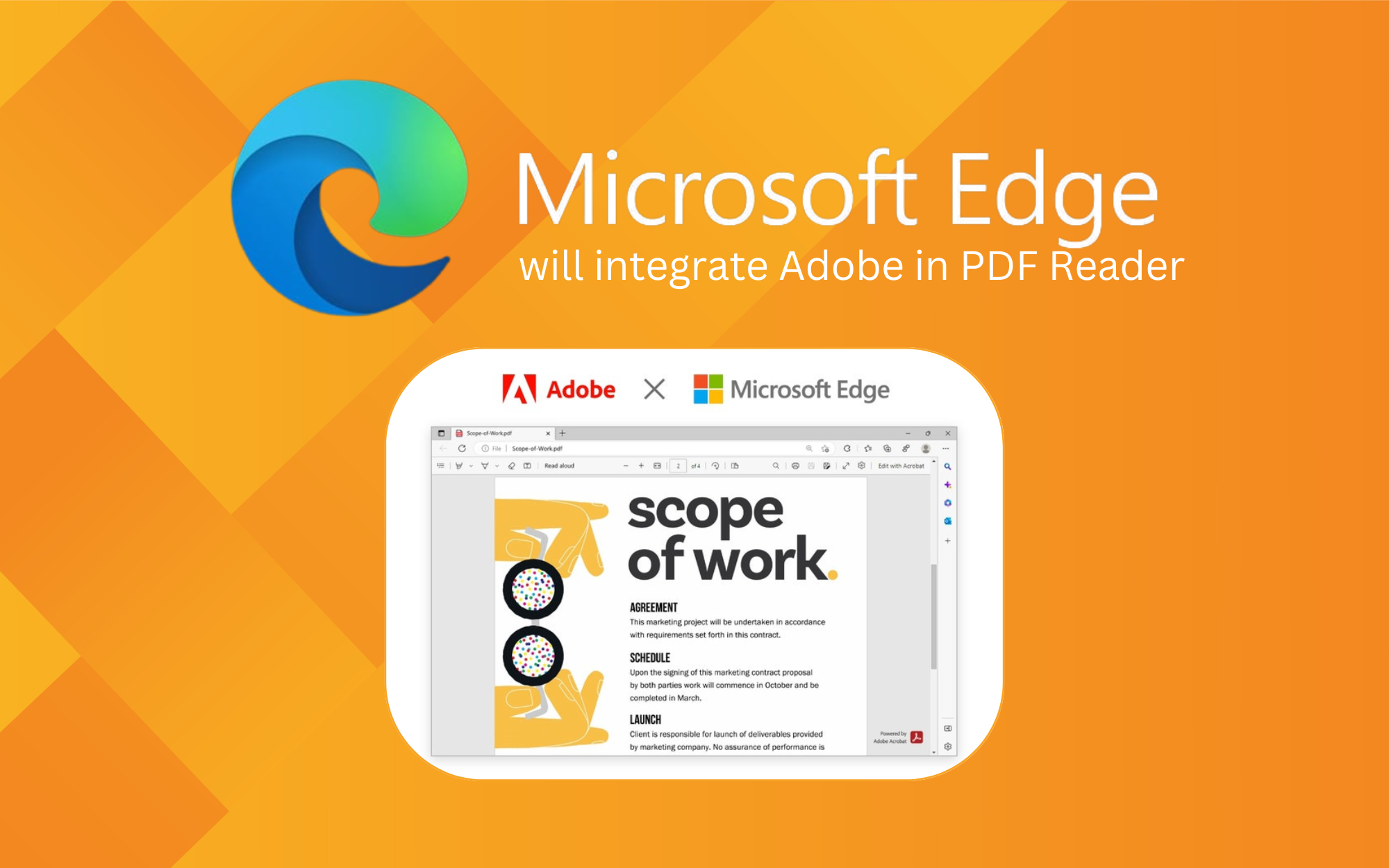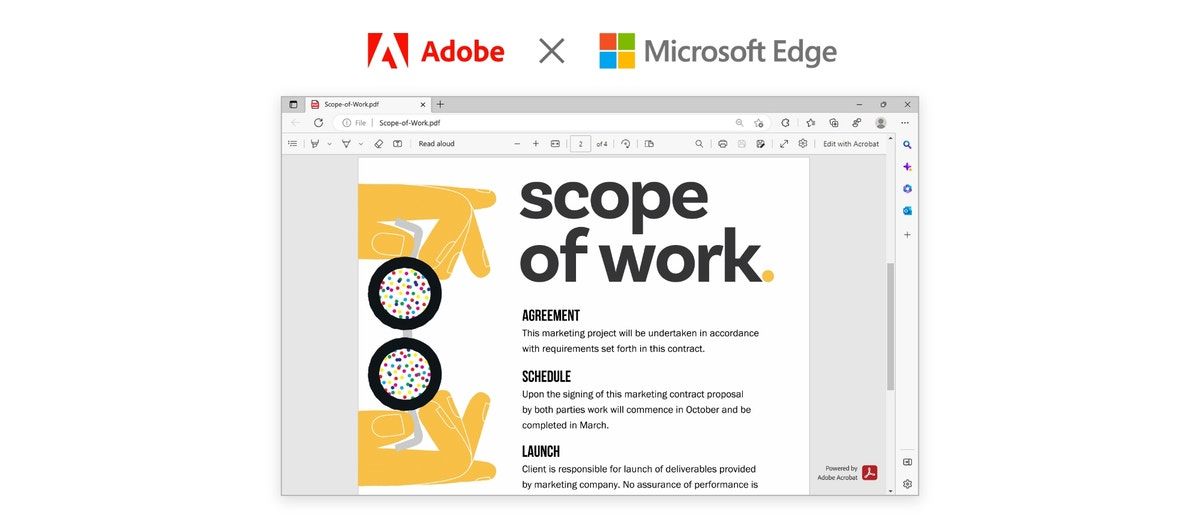Microsoft to Replace Built-in PDF Reader in Edge with Adobe Version

In September 2023, Microsoft will be replacing the built-in PDF reader in the Edge browser for Windows with an Adobe Acrobat version for consumer devices. The reader will be removed from managed devices at a later date, but an opt-out option will be available.
According to Microsoft, integrating Adobe Acrobat technology will result in a superior PDF experience for Windows users. The Adobe Acrobat PDF engine will provide users with a "unique PDF experience," including higher graphic quality, more precise colors, and better performance and accessibility.
Advanced features, such as the ability to edit text and images and convert PDFs to other file formats, will require an Acrobat subscription. Microsoft maintains that basic features will remain free, and no existing functionality will be lost. However, users will see an "unobtrusive" Adobe watermark in the bottom corner of their PDF reader and have the option to try out advanced features.
Starting in March, the Adobe PDF reader as part of Edge will be available to all Windows 10 and 11 users, and by September, all users should be able to use the new reader. The old built-in PDF reader will be discontinued at that time.
For business devices, a different timeline for phasing out the built-in PDF reader will be followed, and unlike consumers, these users can choose to opt-out. The policy begins in March and ends in September. The opt-out period will then start in September and end in March 2024.
This move to phase out the built-in PDF reader in Edge will not be implemented for macOS yet, but it is also planned for the future. The timing for when this will be implemented for Apple's operating system will be announced at a later date.

What does it mean for companies and managed service providers?
For companies and managed service providers, the phased approach to discontinuing the built-in PDF reader in Edge provides more flexibility in managing the transition. The ability to opt-out during the policy phase-out period allows IT departments to assess compatibility and ensure a smooth transition for their managed devices. Additionally, the availability of advanced features through an Acrobat subscription may be particularly beneficial for companies that require more robust PDF functionality. Overall, this change provides an opportunity for businesses to reassess their PDF needs and explore options for improving their PDF workflows.
This change will also improve the overall performance of devices, as users will no longer need to have both Adobe Acrobat and Edge installed. With the new Adobe PDF reader integrated into Edge, users will have access to all necessary PDF functionality within a single application, streamlining the user experience and potentially reducing the strain on system resources. In addition, this change eliminates the need for users to manage multiple applications and updates, which can further improve device performance and productivity.

